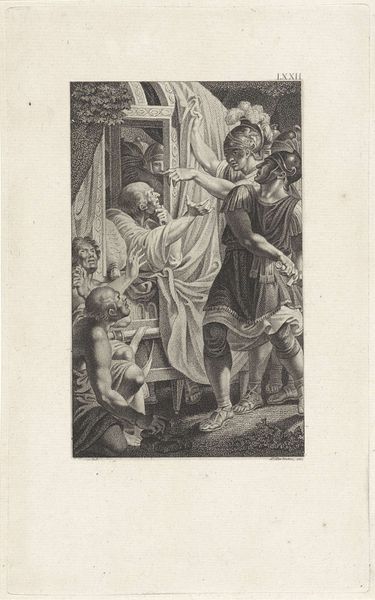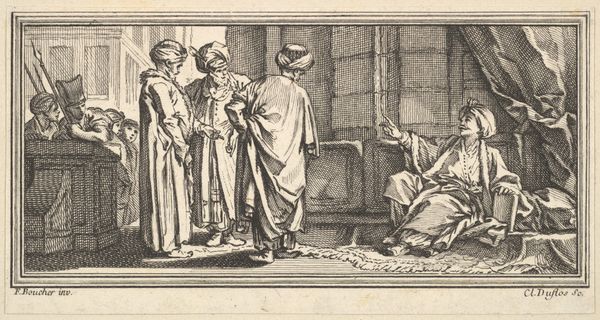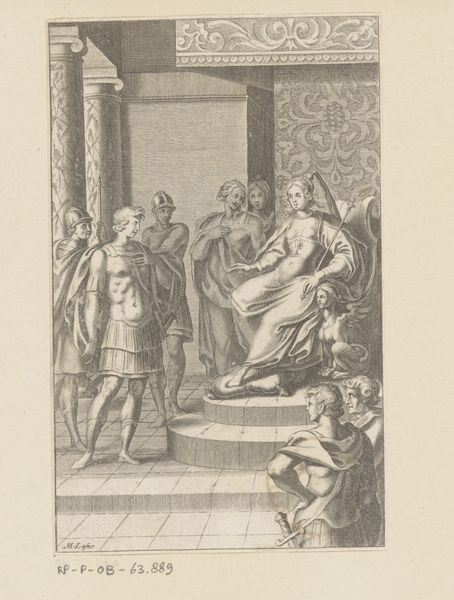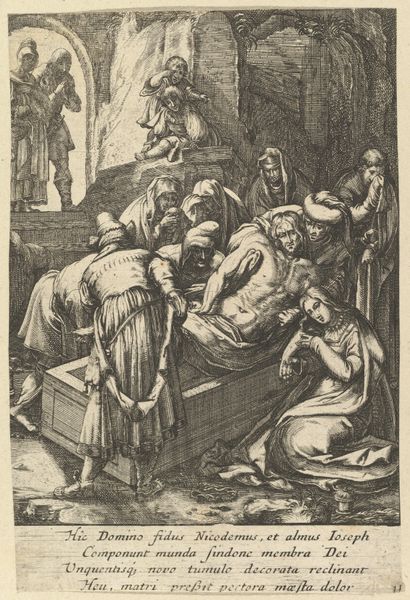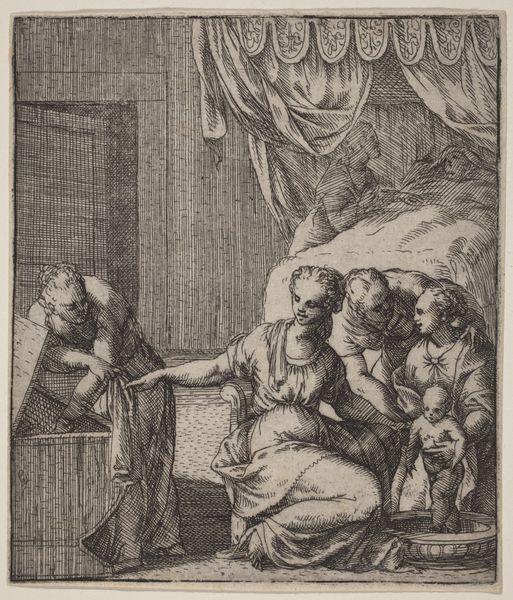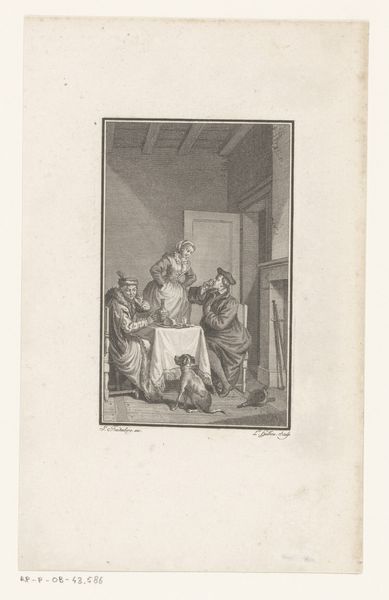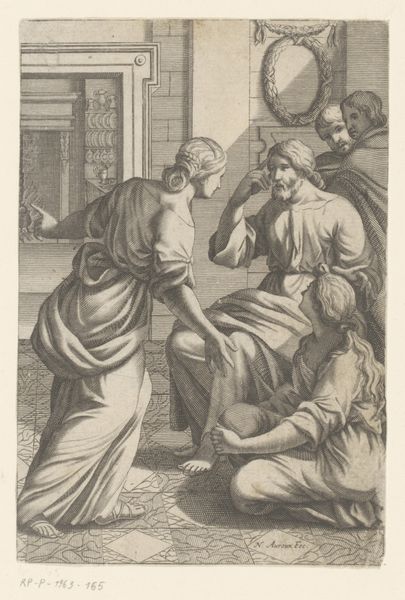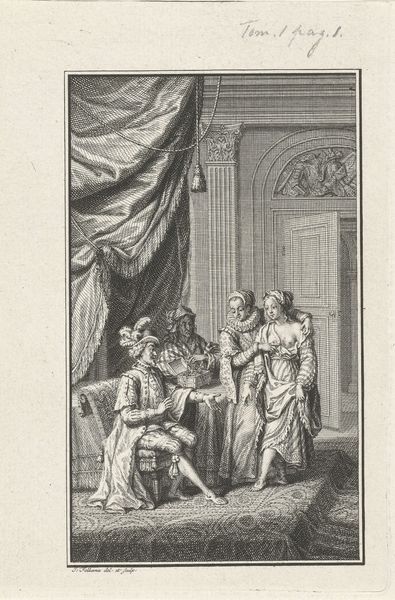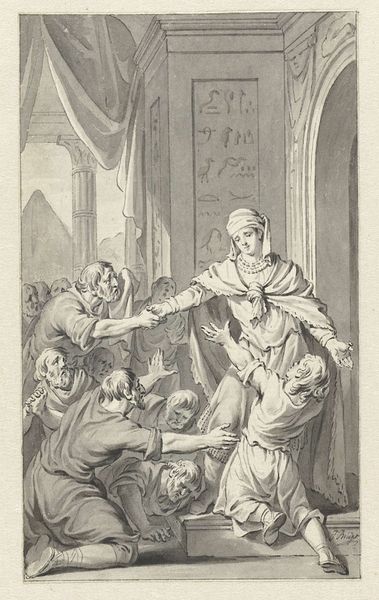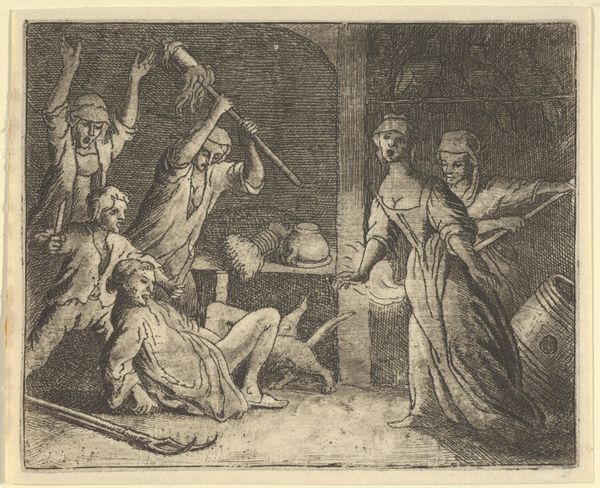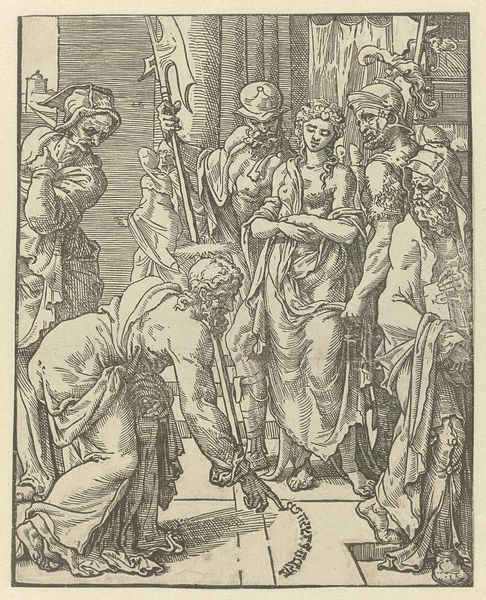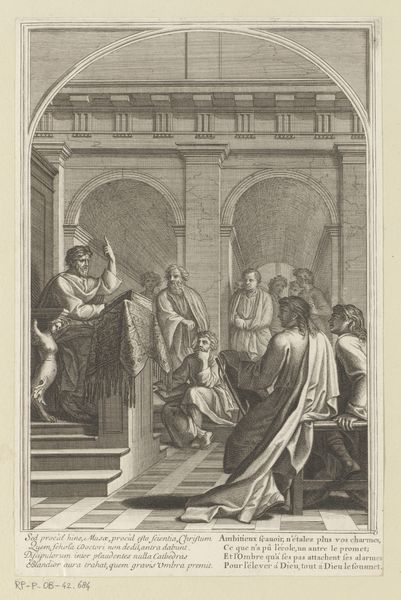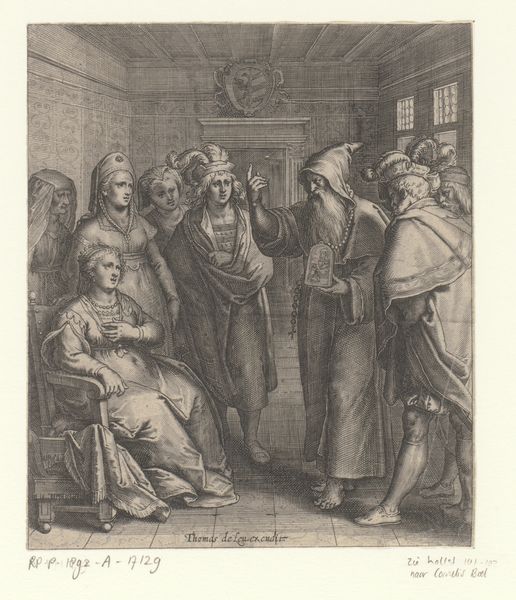
H. Dominicus ontvangt de bul ter bevestiging van zijn orde uit handen van paus Honorius III 1619 - 1624
0:00
0:00
claudemellan
Rijksmuseum
print, engraving
#
baroque
# print
#
old engraving style
#
figuration
#
line
#
history-painting
#
engraving
Dimensions: height 152 mm, width 95 mm
Copyright: Rijks Museum: Open Domain
Curator: Let’s take a closer look at this engraving. What catches your eye? It's by Claude Mellan, dating from 1619 to 1624, and is called "H. Dominicus ontvangt de bul ter bevestiging van zijn orde uit handen van paus Honorius III." The piece depicts St. Dominic receiving the papal bull confirming his order from Pope Honorius III. Editor: The starkness of the engraving immediately sets a tone, doesn’t it? It’s all about the line; the figures emerge from this sea of strokes. I wonder how the experience of producing it influenced this final look – what was Mellan’s workshop setup like, his daily life? Curator: Knowing that this print resides in the Rijksmuseum tells us a lot. Institutions play such a huge role in preserving, interpreting, and displaying pieces like this, solidifying their place in history. The baroque style is obvious in the composition’s dynamism. It captures a specific moment laden with historical and religious significance. How does the institution contribute to the politics of this imagery? Editor: I’m also curious about the materials used for the printing. Was it readily available, costly, or did access affect who consumed and commissioned such art? How does the materiality impact our understanding of Baroque sensibilities and aesthetics through its replication? Curator: Well, consider this piece in the context of the Counter-Reformation. Images like this affirmed papal authority. Notice the theatrical display: Pope Honorius presents the document, flanked by witnesses, under ornate drapery. It projects power and legitimacy, doesn’t it? Think about how a public audience might read this—what symbols would resonate for them? Editor: True. We shouldn’t divorce the reception from material realities either. Widespread distribution through print makes it vital to religious doctrine and social instruction. Each print would be like another worker replicating meaning! How intriguing. Curator: Exactly. Reflecting on this engraving, I’m reminded how art intersects with institutional power and cultural narratives, making places like the Rijksmuseum a vital site for these ongoing dialogues. Editor: And I’m reminded that analyzing artistic output means addressing conditions of material creation – an engagement that invites dialogue between past producers and contemporary interpreters of visual culture.
Comments
No comments
Be the first to comment and join the conversation on the ultimate creative platform.
